Tidal Exchange
NEWSLETTER OF THE ELKHORN SLOUGH FOUNDATION
SPRING 2012
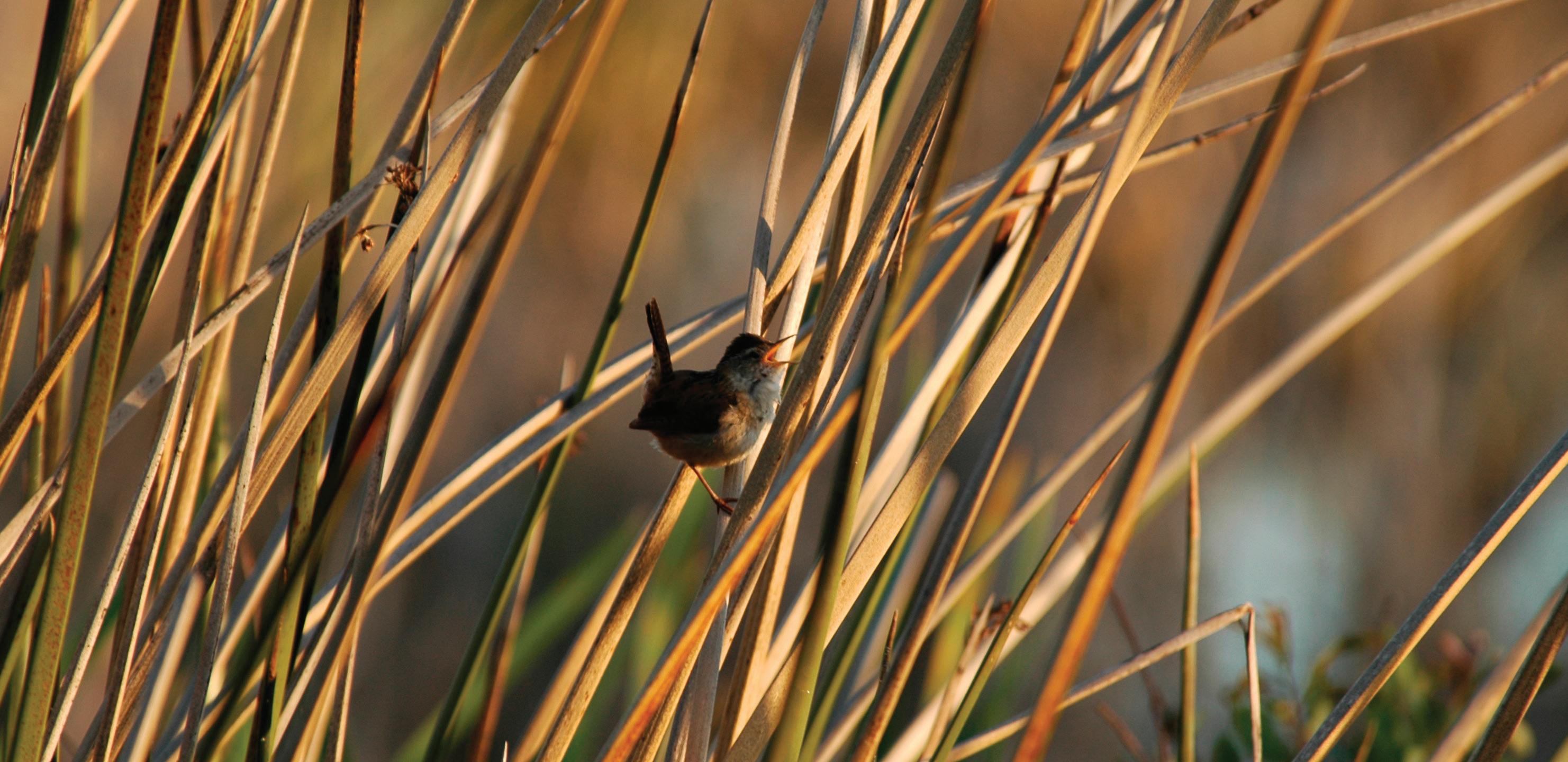

SPRING 2012

Thirty years ago the community of the Elkhorn Slough watershed – residents, scientists, landowners and business-owners alike – decided that this spot of earth was so unique, and so threatened, that it should be conserved forever.
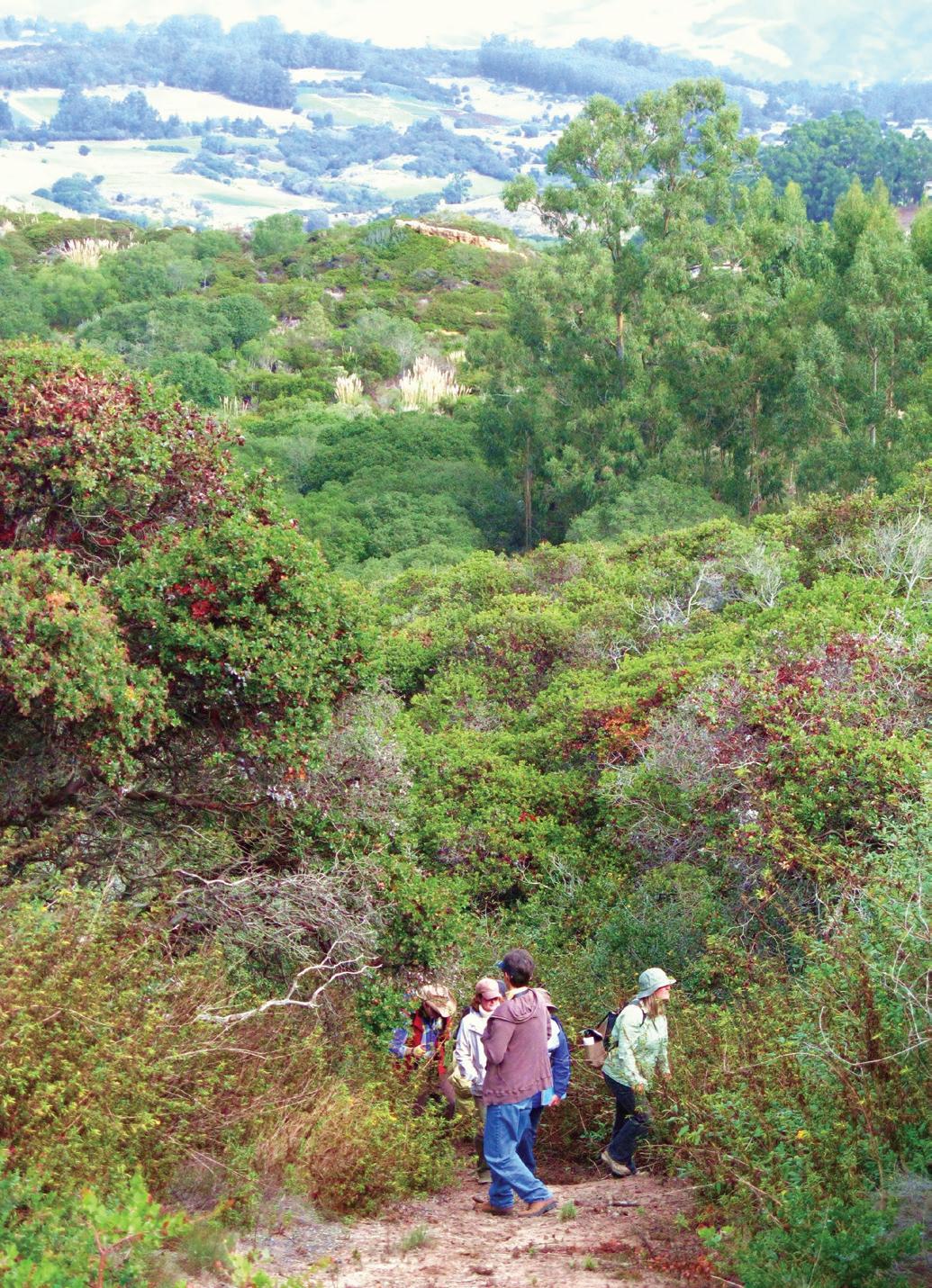
They started by supporting the Elkhorn Slough National Estuarine Research Reserve and in 1997 they started looking at the bigger picture – the entire watershed encompassing the Reserve. A land trust was formed to set about securing land for future generations to enjoy. The Elkhorn Slough Foundation staff began restoring and healing the terrain to make the slough a haven for wildlife and people. Three decades later we can reflect on the achievements we’ve made since we set out in 1982.
The Elkhorn Slough Foundation has made great strides in many important ways as we worked over the years to steward the land, learning what really works when it comes to healing this place and engaging the community in its protection. Our stewardship team has pulled rusted school buses and mountains of tires out of ditches, removed miles of plastic from under the soil and planted native vegetation which helped filter the water that flows through the hills. We’ve reached out to students, teachers, members of the agriculture industry and businesses in the area to tell them not only about the value of this place, but also that they are connected to it. The Foundation has written grant proposals, supported researchers, helped streamline major restoration projects and brought critical funding into this rural part of the county. And we aren’t done yet. In fact we’ve just begun.
Protecting this watershed is a task we gladly undertake and it is a never ending job. We’ve been at it for thirty years and we hope you’ll look back on all that has happened here in those years and be proud that your support has helped accomplish so much.

elkhorn slough founDaTion
BoarD of DirecTors
Steve Webster presiDenT
Steve Dennis
Vice presiDenT
Richard Hammond
Treasurer
Steve Green secreTary
Ed Boutonnet
Judith Connor
Terry Eckhardt
Robert Hartmann
Kent Marshall
Anne Olsen
Mike Pinto
Anne Secker
Lydia Villarreal
Tom Williams
Mary Wright
Mark Silberstein execuTiVe DirecTor
The mission of The elkhorn slough foundaTion is To conserve and resTore elkhorn slough and iTs waTershed.
we see elkhorn slough anD iTs waTersheD proTecTeD foreVer–a working lanDscape, where people, farming, inDusTry, anD naTure
ThriVe TogeTher as one of california’s lasT greaT coasTal weTlanDs, elkhorn slough will remain a wellspring of life anD a source of inspiraTion for generaTions To come
po Box 267, moss lanDing california 95039
Tel: (831) 728-5939
fax: (831) 728-7031
www.elkhornslough.org
TiDal exchange
Quinn Labadie, eDiTor
prinTeD on recycleD paper By marTella prinTing © 2012 elkhorn slough founDaTion

When you think of protecting a watershed, you might think of the work the Foundation does daily. Removing invasive weeds. Planting native species. Guarding against trespassers who might litter or unwittingly damage landscapes in other ways.
Much of our work places us in the role of healers for the lands we manage, yet other times we need only act as guardians. “Both roles are vital to keeping open spaces available and functional for animals and for people,” says ESF Stewardship Director Kim Hayes. “We work hard to heal the watershed’s most damaged land and to protect its unspoiled places.”
Our Long Valley property is one example of land we’ve acquired that did not need to be restored. One of the largest unfragmented strands of maritime chaparral and oak woodland in the watershed, it’s a great place to hike and watch birds, and it offers a stunning view of the slough. But at one time, developers who owned the land had it slated for residential housing; sites were staked and bulldozers were on the scene, ready to get to work. ESF purchased the property to save one of the last untouched areas in the watershed and the following winter native vegetation helped control erosion from El Niño rains that surely would have decimated the hillsides had the project been underway. Today some of our
most beautiful walks are through its oakframed paths.
Other properties are not so easy to maintain. For example, our El Chamisal property had, at one time, something we’ve termed the ‘Mini-Grand Canyon.’ This massive gully reached up to 20 feet deep, 60 feet wide, and ran a course 600 feet long. Inside it were thousands of pounds of plastic, piles of cars and even a school bus. Our Stewardship team pulled this garbage out of the eroded hillside and replaced the trash with healthy terrain. Clean soil filled the gorge and native plants were planted to hold the soil in place. Through the years we’ve planted thousands of native grasses, as well as coastal oaks and shrubs. It can take seven to ten years to restore very badly degraded lands, and then the maintenance of the land begins.
Today, both of these properties – and many more – are safe and healthier. Plenty of native plants populate our hillsides and ridgetops and invasive weeds are on the decline. Sediments have been stabilized and development has been diverted. We look forward to continuing to improve the watershed’s health for many more years to come as we learn from these successes. Yet land is not static, and thus neither are we. Our restoration and maintenance work repairs these rare environments daily.
In 1982, the Elkhorn Slough Foundation was established to support the newly formed National Estuarine Research Reserve (ESNERR) and has been doing so ever since. From assisting our colleagues at the Department of Fish and Game with land acquisition to launching outreach programs that continue to reach new folks every day, the Foundation has worked hand in hand with the Reserve to make it a wonderful place to visit, to learn and to be inspired.
ESF’s partnership with ESNERR goes deep and far back. Since its first decade, the Foundation has worked hard to support research by students, faculty and other researchers at Elkhorn Slough. Executive Director Mark Silberstein introduced many scientists to this living classroom and formed critical networks with experts in diverse disciplines. ESF also started the Reserve’s robust volunteer program in 1982. That first class of 19 docents helped blaze the path for today’s more than 100 volunteers, many of whom have given thousands of hours of their time. In 1989 the Foundation helped launch the Reserve’s volunteer water monitoring program, which has monitored 24 sites throughout the slough over the past 23 years.
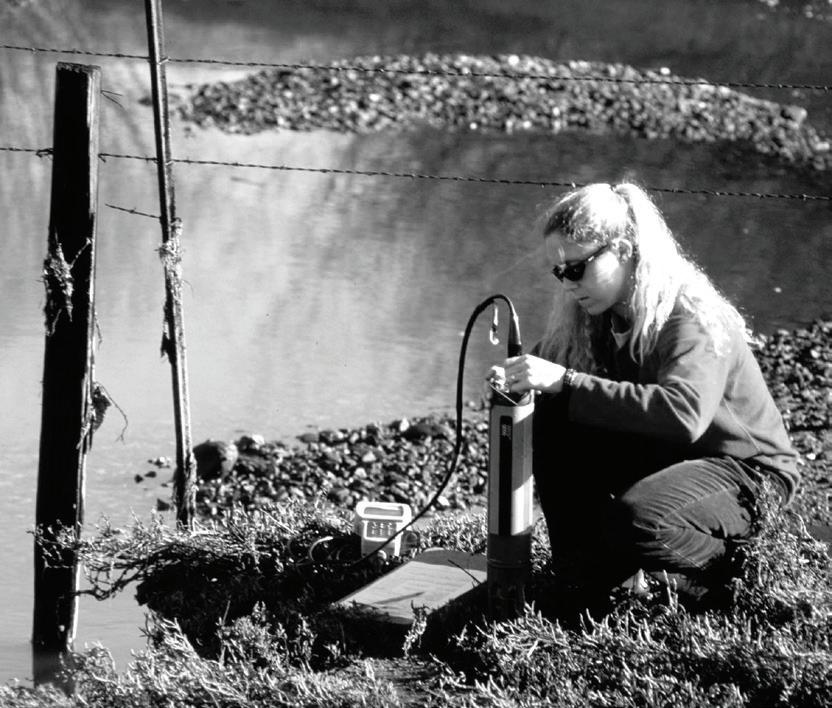
ESF continues to support the Reserve. Our role may have changed from the early days, but as an administrative arm, ESF provides critical support that offers flexibility to the researchers. “ESNERR scientists have more time to focus on estuarine monitoring and research because ESF works so efficiently behind the scenes, streamlining our grants management,” says Research Coordinator Kerstin Wasson. To date, ESF has administered millions of NOAA funds on behalf of the state so that DFG can use their resources to operate Reserve programs such as the Coastal Training Program, Research monitoring and K-12 education to name only a few.
As a land trust, ESF manages the lands that surround the slough, improving the habitat quality in and around the Reserve, attracting rare species for scientists to study, like endemic Olympia oysters and endangered Santa Cruz long-toed salamanders.
It is together – ESF and Elkhorn Slough Reserve – that we provide the most effective conservation efforts for the Elkhorn Slough. Our work cannot be separated; we are one team with the same goal of protecting, researching, restoring, and sharing this amazingly diverse environment.

When the Elkhorn Slough Foundation made the decision to become a land trust in 1997, it was in essence taking a step back to see the big picture. What happens upstream affects the Reserve’s lands, the slough, and the marine sanctuary further downstream – to protect these places we work with landowners throughout the watershed to remove invasive weeds from their properties.
Three troublesome plants have really spread through the watershed: jubata, arundo and perennial pepperweed. These plants aggressively hog resources so that native plant populations dwindle, and their seeds spread quickly in the wind. Early detection of invasive species in the watershed followed by swift eradication helps control how far these plants spread, so our team keeps a vigilant eye out, hoping to spot new plants before they can spread their seeds. ESF and ESNERR have also worked to educate neighbors about how these plants threaten the biodiversity of our protected lands. Once landowners know about these potential problems they are often happy to let us remove the plants from their property.
In the past year alone we have treated 250 acres of jubata grass on 2,200 acres of land, breaking down the false barriers of parcel lines in the process. Collaborating with neighbors to find and remove these plants keeps the slough healthy, and over the years thousands of invasives have been removed from the watershed. In the coming years those numbers will only continue to grow.
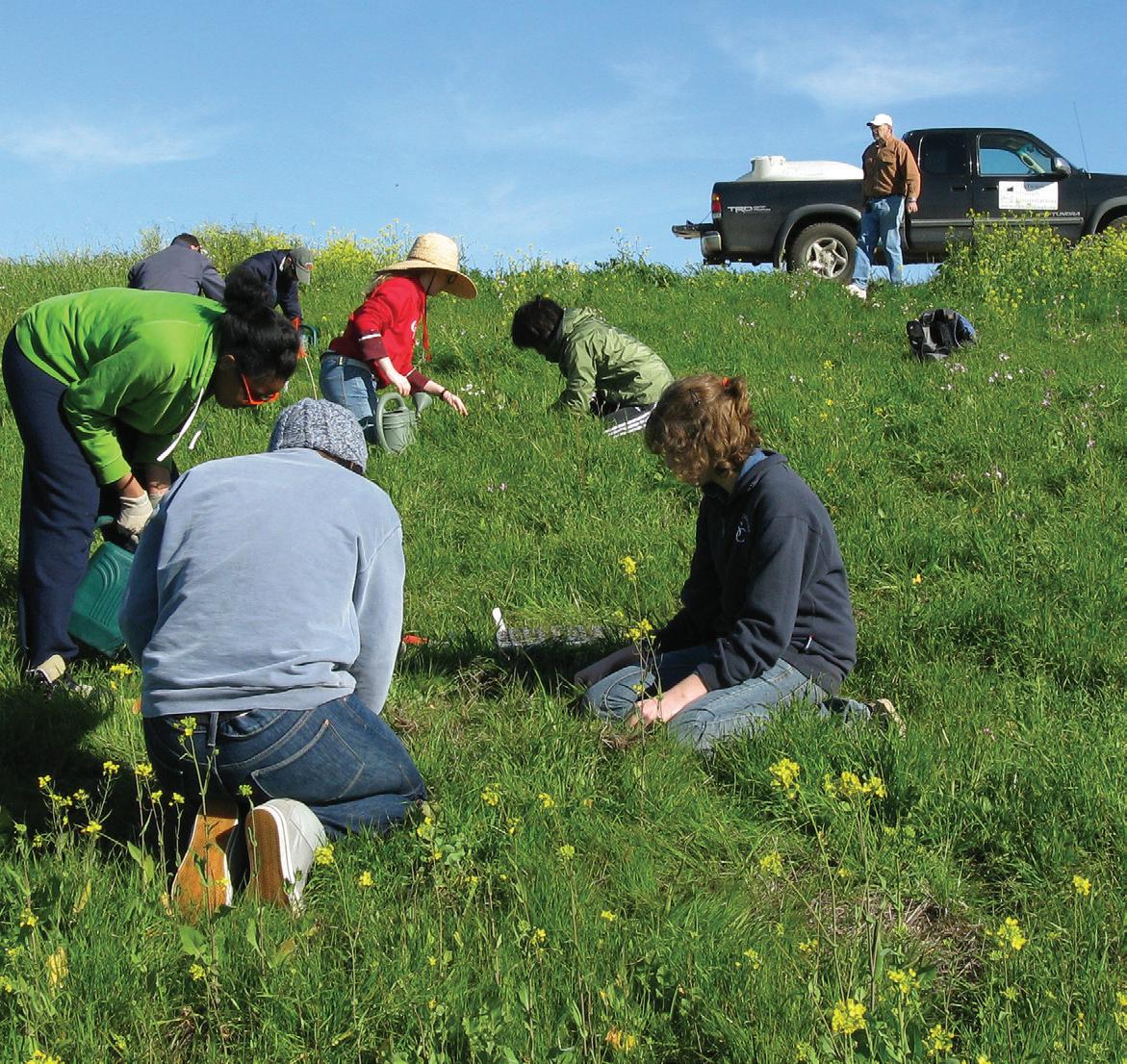
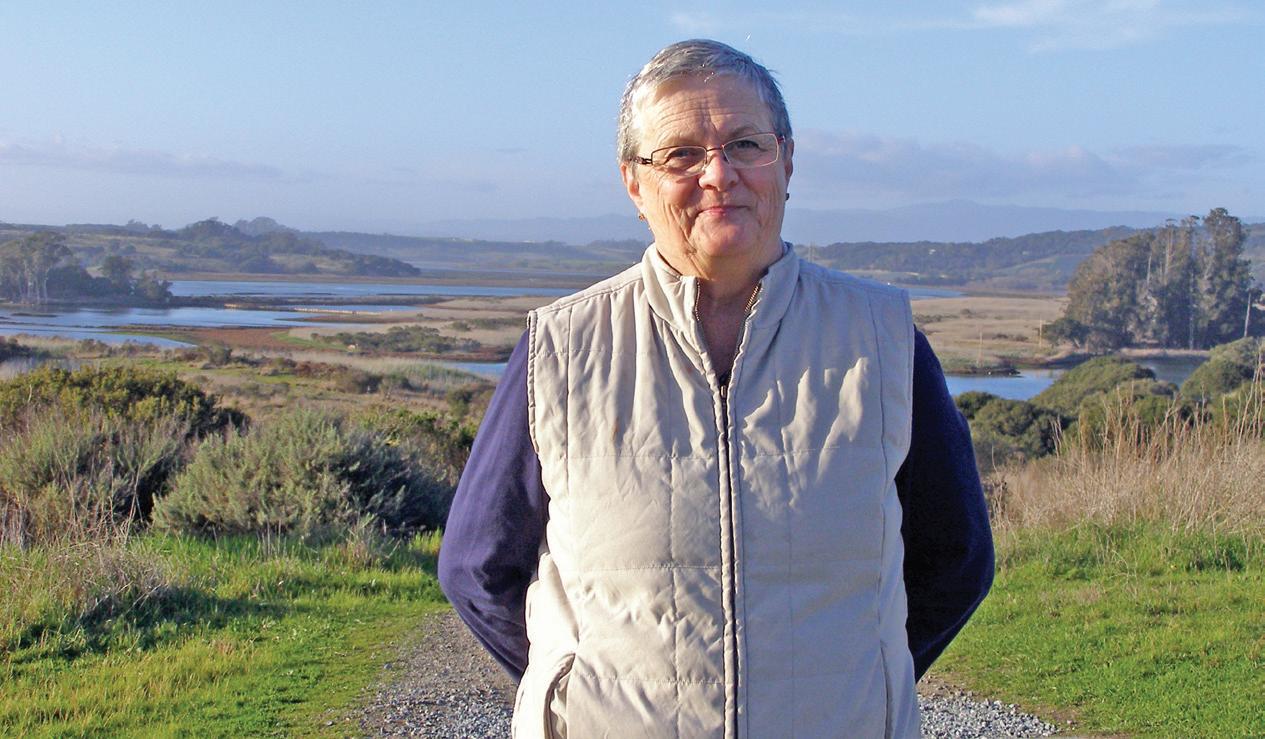
A stalwart fan of the slough from the start, Marilyn McLoughlin was devestated when in 1983 she was struck with bronchitis. The illness forced her to miss the inaugural docent class, but she dove right in for the second class in 1984. She recalls the docent lectures at the old Moss Landing Marine Labs being “a new world for a lady from the inland. The plants, the bioluminescent plankton, owls, all exciting!”
Originally from New York, Marylin moved to California in the 1970’s. She has taught at Castroville Elementary for decades. Marilyn encourages her students to recycle –helping to nurture their love for local nature, science, and environmentalism. “I ask them to save their pencil shavings for my compost, too.” With her education background, Marilyn was instrumental in developing the Elkhorn Slough Education Program. This slough-specific curriculum has been the basis for the class field trips enjoyed by hundreds of thousands K-12 students.
Marilyn has many stories to tell of Elkhorn Slough. She recalls attending a public hearing about making the Elkhorn Slough a protected area. One of her friends who owned slough-front property brought his neighbor, a farmer friend who was opposed to the idea of turning the slough into a reserve, to the hearing. “After learning about how unique this place is, that farmer helped build trails at the Reserve. And twenty years later my friend sold his property to ESNERR.”
Marilyn has been a vital part of sharing the slough with students and friends. Her support and involvement makes her more than an ESF member, it makes her part of our ongoing success.
Your membership donations support our work, be it restoring degraded farmland or assisting the Reserve. You also enjoy special discounts, as well as invitations to special member events. Recently, we expanded our benefits for members of the Stewardship Circle and above to include no-fee access to the Reserve. Conservation Circle and Land Partner members also receive guest passes that allow them to share the beauty of the place they generously support. We’re grateful for every member and believe the greatest benefit of membership is the knowledge that you are supporting the long-term conservation and health of Elkhorn Slough.
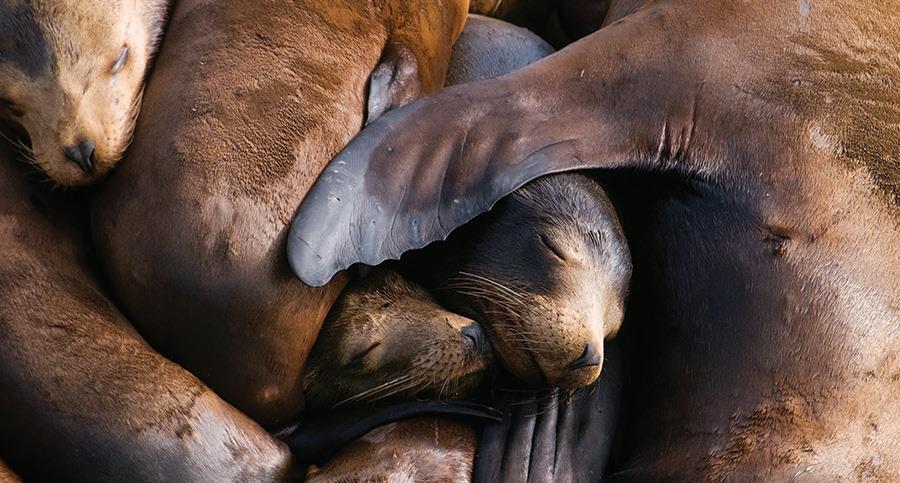
Since its inception as a land trust ESF has worked with neighbors, local government agencies and other non-profit organizations.
One such partnership is keeping important habitat in focus for potential conservation projects. When the California Department of Transportation (Caltrans) undertakes a new project, they are required to not harm important habitat. If that cannot be avoided, they make sure nearby land of equal or greater value is protected, mitigating the harm done by ensuring the safety of rare plants and animals.
ESF has spent thousands of hours over the past five years researching local land parcels to help Caltrans find properties suitable for conservation, which they then protect either by purchasing land or purchasing an easement on the land to help offset their project impacts. Sometimes we look for a property with a suite of imperiled habitats, and other times it’s a parcel with ideal conditions for imperiled species, like the California tiger salamander. By drawing on our watershed knowledge we help Caltrans find land in real need of protection.
We have also emphasized the importance of planning ahead to secure adjoining swaths of land rather than “postage stamps” of land here and there. While it is easy to find the closest land available to protect, in the long run it is easier to steward one large important area than many small important areas. Conservation tends to be more successful when placing preference on contiguous pieces of land, and by finding these parcels of land ESF helps Caltrans maximize their mitigation spending in the Elkhorn Slough watershed, doing the most good with the money they spend.
Partnerships like this further our work by building new connections to the community and strengthening the bonds already in place. We all work together to protect the land and to share it with our neighbors. And protecting unique places in the watershed so that future generations can enjoy them is what we’re all about.
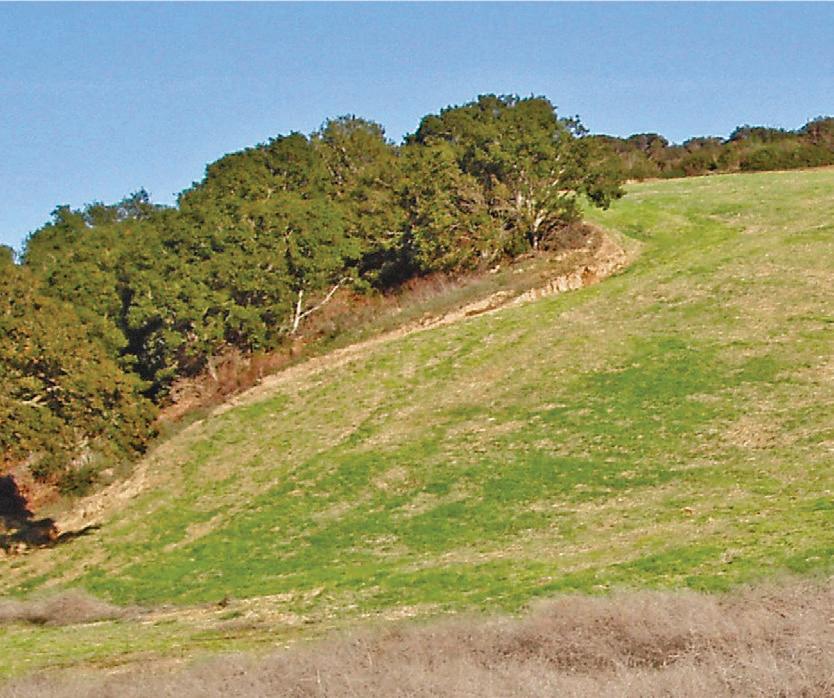
Erosion-riddled Renteria property before ESF’s restoration.
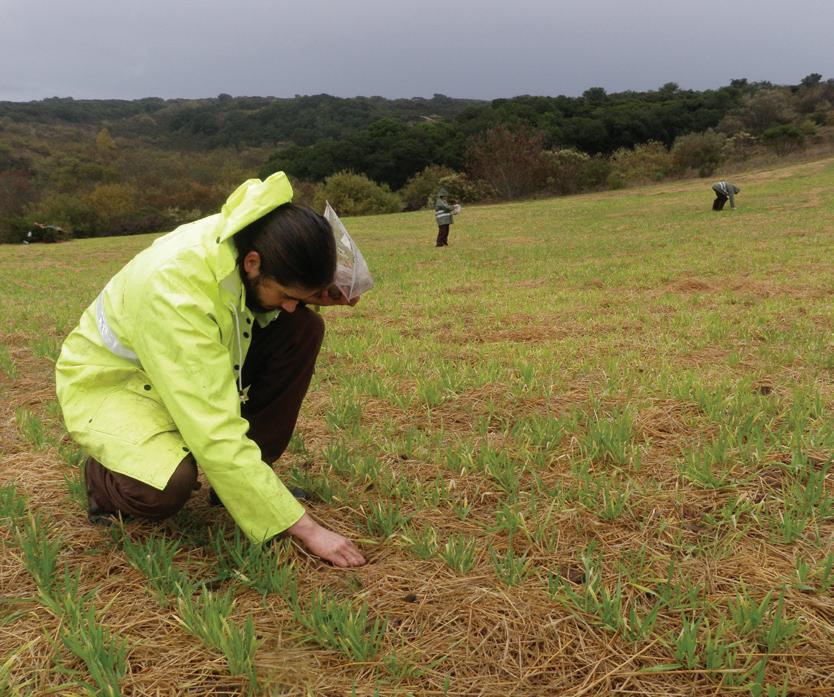
Half-buried cars clog the hillside on El Chamisal before restoration work.
ESF’s Renteria property post restoration: native plants help keep erosion at bay.
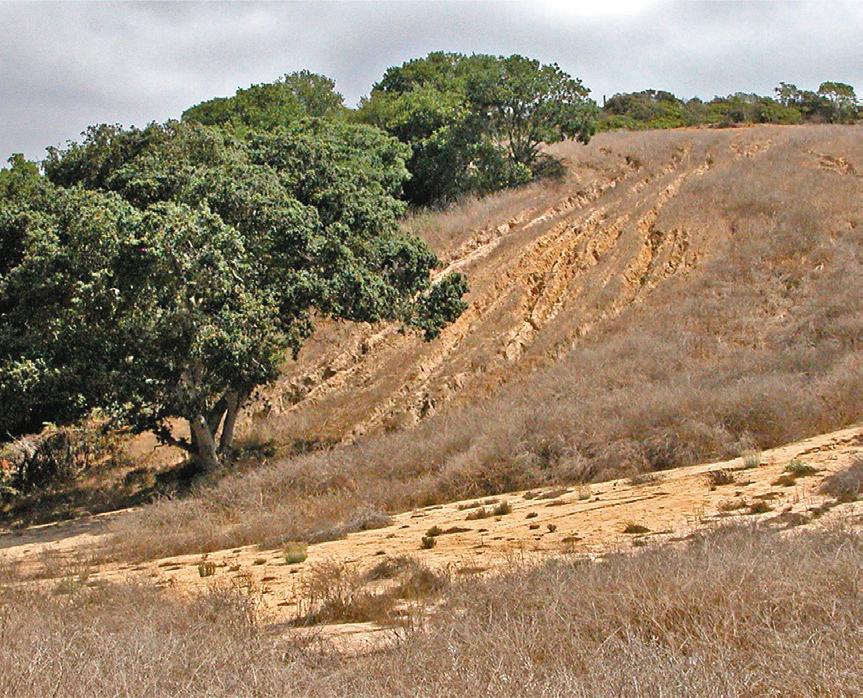
ESF volunteers brave the rain to plant acorns on our newly restored El Chamisal Property.

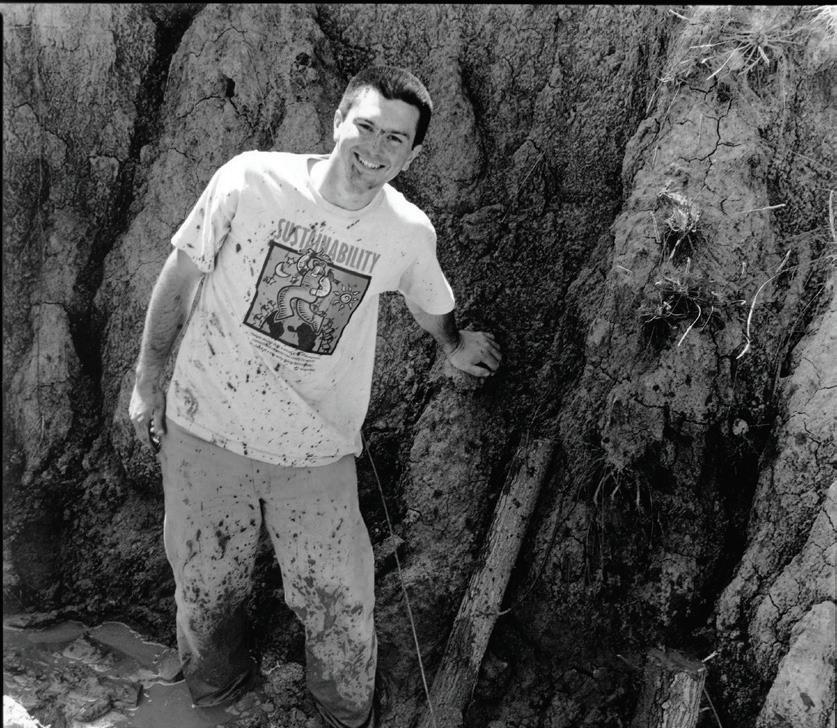
ESF’s Ken Collins helps the California Conservation Corps repair a gulley, reversing erosion damage in the watershed (photo by Tupper Ansel Blake).
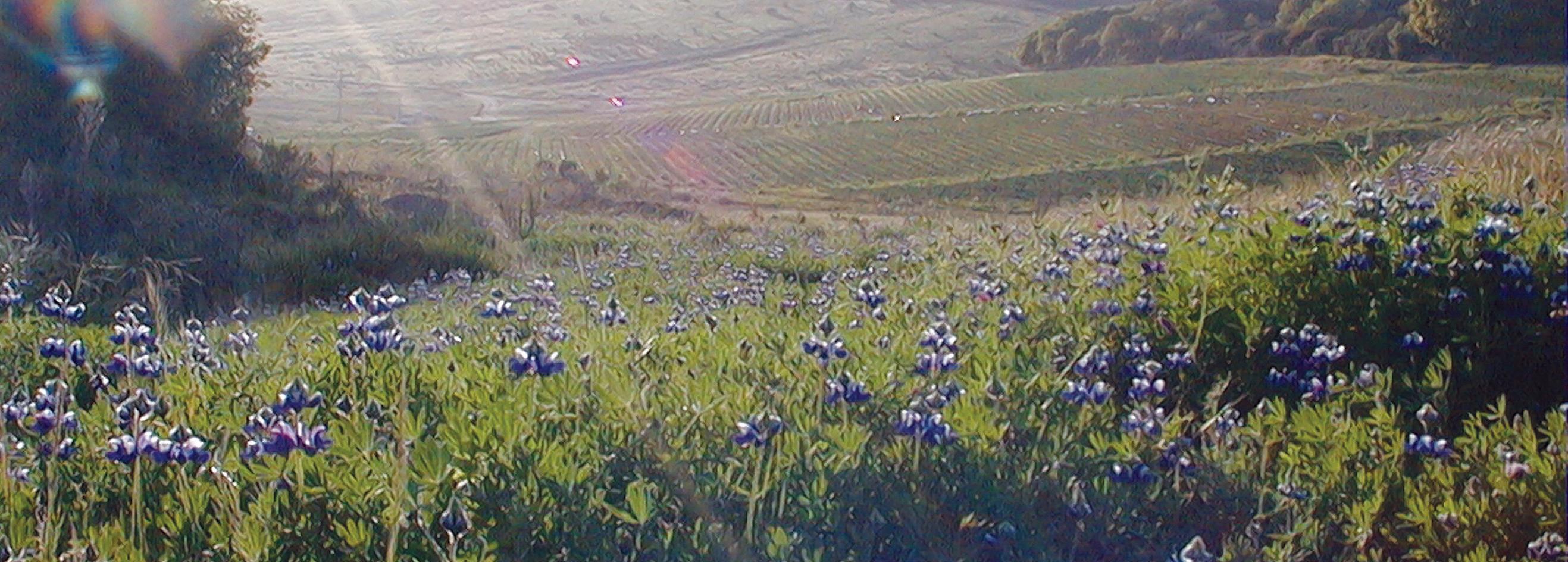
Did you know that ESF began managing the 357-acre Blohm Ranch shortly after it was acquired by the Nature Conservancy (TNC) in 1991? And in that twenty years, we’ve done quite a lot of work! When Blohm Ranch was first acquired, it was overrun with invasive weeds and riddled with gullies. Farming had creeped up onto steep hillsides and the resulting erosion choked important freshwater habitat with sandy soils. ESF’s stewardship team gave the property a chance to heal by...
• Removing several tons of sand to restore the property’s freshwater frog pond,
• Re-grading and seeding the hillsides with native grasses to control erosion,
• Repairing massive gullies from the 1994 El Nino rains,
• Removing more than 1,000 aggressively invasive jubata plants, and
• Implementing Best Management Practices for good farming, including organic growing methods, protecting dirt roads with straw, fallowing steep sandy hillsides to reduce erosion, and installing sediment capture basins to address any remaining erosion.
All of this work was undertaken in partnership with local volunteer groups like Boy Scout Troop 275, employees of CTB McGraw Hill and REI, the Reserve, and various partners like the California Conservation Corps and TNC. Our land team is grateful for the helping hands of this wonderful community, and we hope you’ve appreciated the results of all of this effort. Because of the work done at Blohm Ranch, ESF members can enjoy the property’s incredible vistas, see endemic native plants found in no other watershed, and walk through its gracefully sloping hillsides and rare maritime chaparral habitat. If you want to see Blohm Ranch first hand, become a member of the Foundation—members are invited to private hikes and other events throughout the year on this and other stunning properties throughout the watershed.
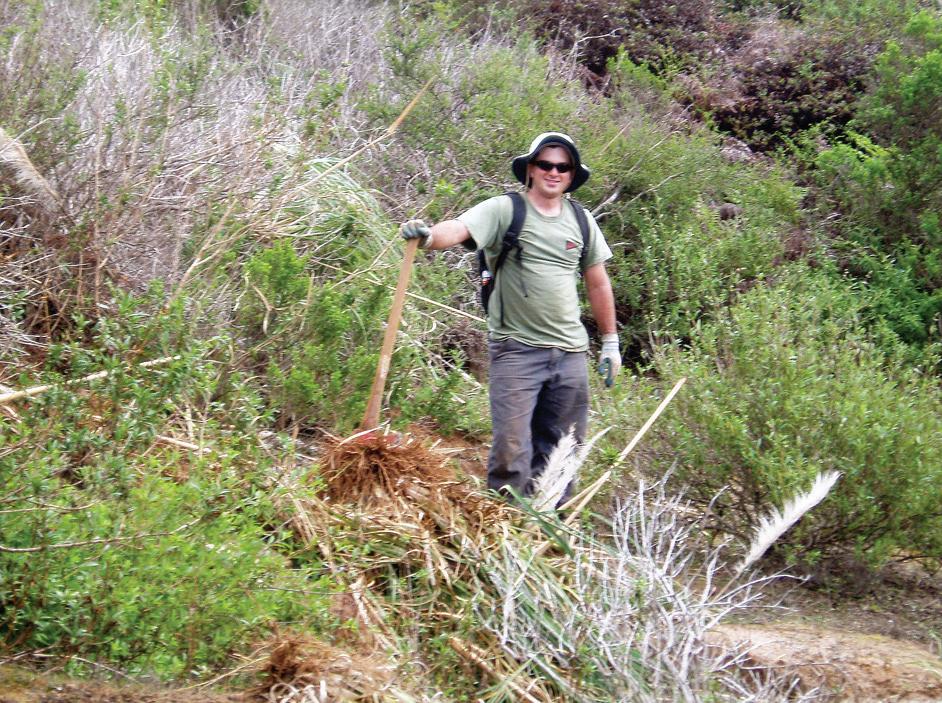
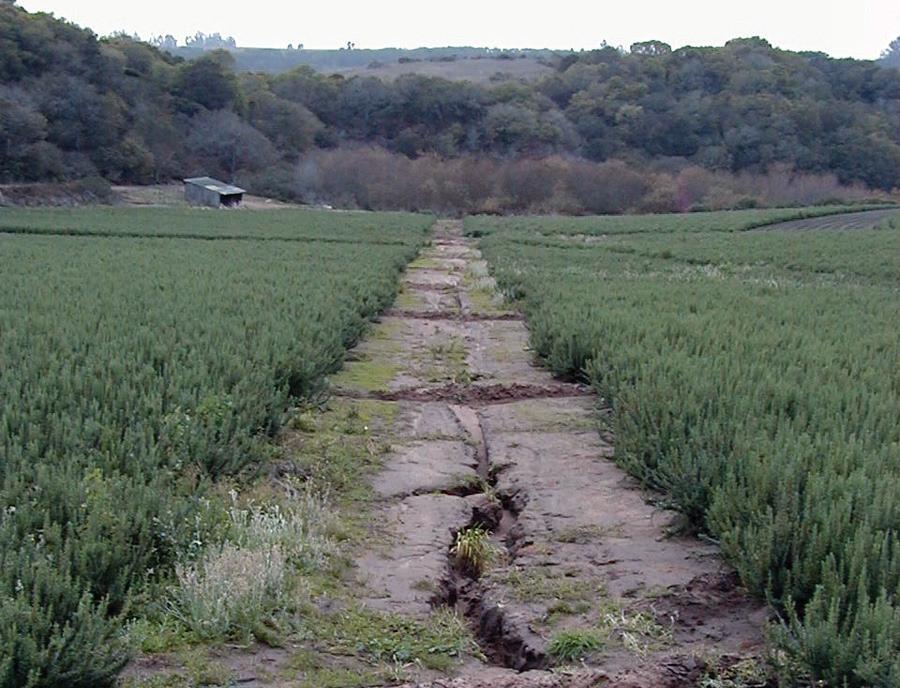
Even though farms on land we manage are organic now, past use of pesticide makes it important to control erosion. This straw does just that.
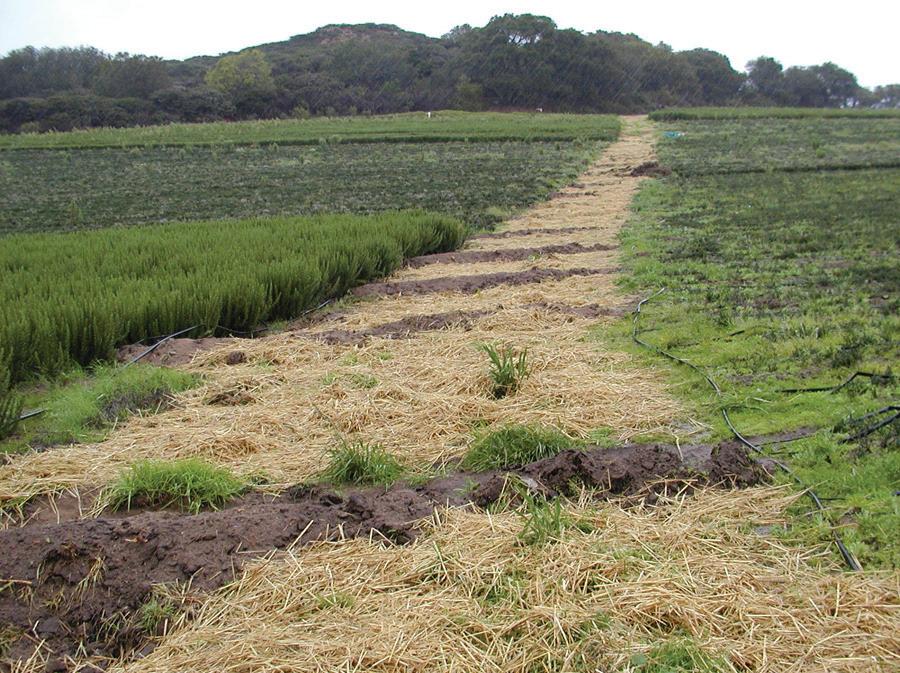
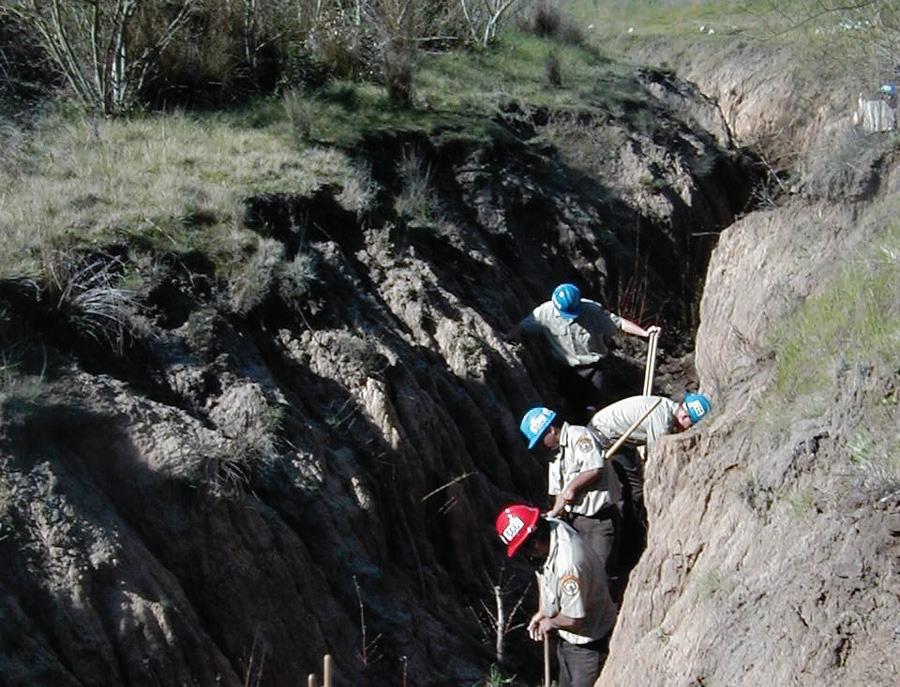
ESF removed literally tons of sand from a freshwater pond, restoring habitat for rare watershed amphibians.
The CCC works to repair a gully. There is always so much to be done, and we are thankful for the help of our volunteers.

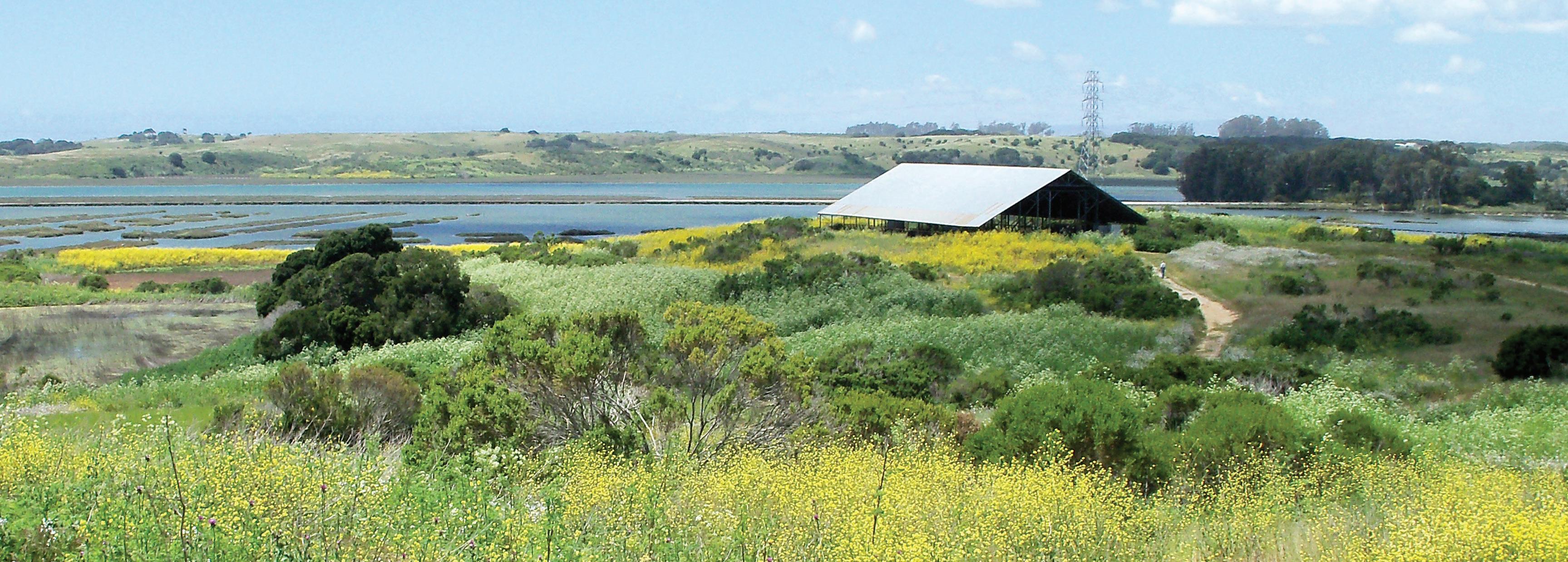
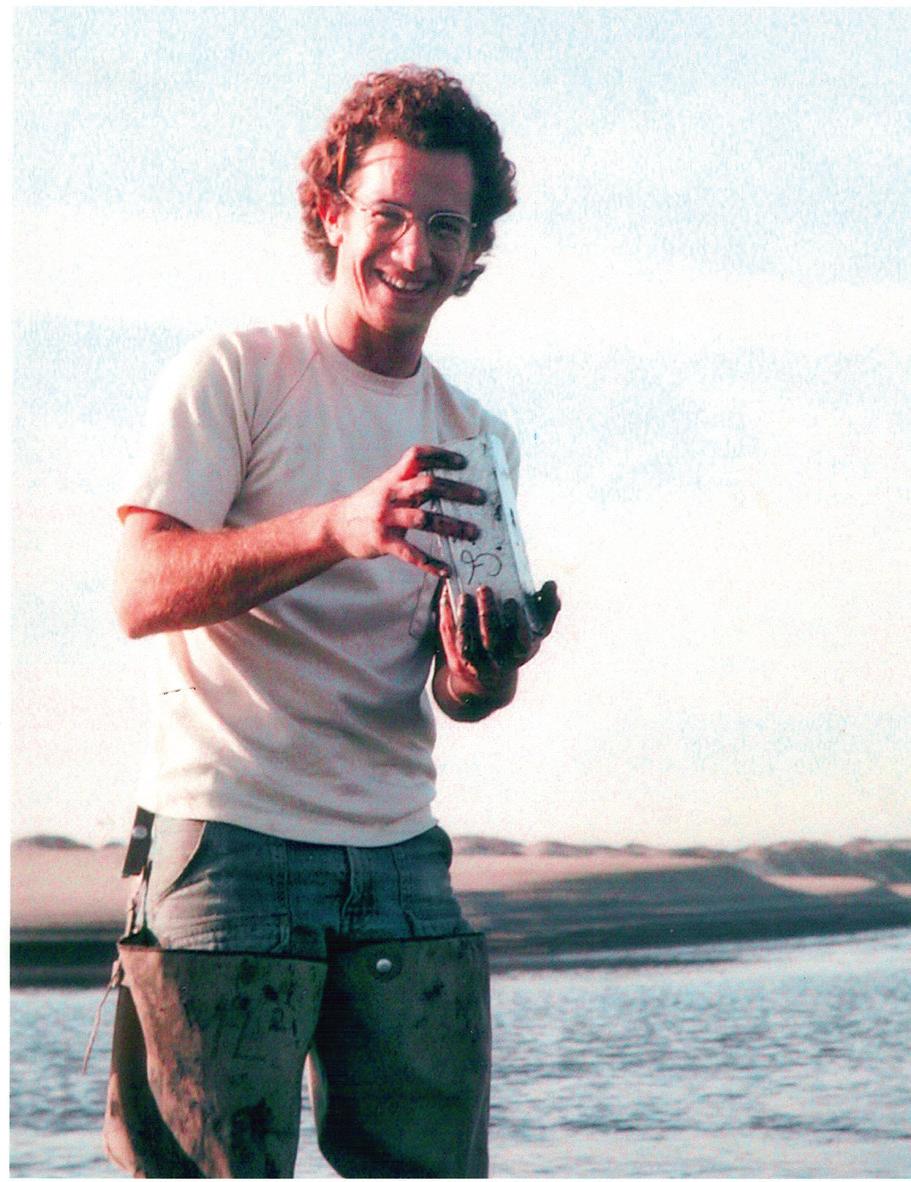
ThirTy years anD counTing
Mark Silberstein, Executive Director
Thirty years ago, a group of local citizens worked with the manager of the newly designated Elkhorn Slough National Estuarine Sanctuary to create a community non-profit organization with the goal of producing education, research and community outreach programs in Elkhorn Slough. This group started with a few volunteers and two hundred dollars in the bank. Now, three decades later, we look back at the arc of work we’ve done and at the trajectory ahead. There is much to be pleased with as we trace the conservation and community accomplishments in Elkhorn Slough and create a vision of the future that stretches out ahead.
Last week I met a mother visiting the slough with her daughter’s class. She shared with me that she had visited the slough when she was her daughter’s age and remembered how amazed she had been to discover this place for the first time. I can envision this woman’s daughter bringing her own daughter here, and on down the generations. This is the kind of natural legacy that has lasting impact.
The Foundation is now the largest single landowner in the Elkhorn Slough with close to 4,000 acres under our management. These lands encompass rocky chaparral covered ridgelines, oak forests, coastal prairies, sand dunes and diverse wetlands. ESF also maintains working farms and ranches that play a role in the agricultural economy of our coast. Hundreds of acres of degraded and eroded land have been brought back to productive habitat. Streams, ponds and marshes have been restored. Groundwater aquifers have been recharged. The ‘green infrastructure’ that we depend on is being repaired.
As part of our 30th anniversary we thought it was time to update our look. In the pages of this year’s Tidal Exchange newsletters we will share our history by telling stories and pulling up old photographs to illustrate our progress. We hope you’ll want to celebrate this landmark year with us, and are asking you to send us your favorite memories of Elkhorn Slough. If we decide to share your story in upcoming issues of the Tidal Exchange or the Slough Buzz, we will send you a $10 gift certificate to the Visitor Center bookstore. You can submit your slough stories to stories@elkhornslough.org
Every day when I come into the slough, I see all the things that need our attention. I see all the things on the list that are not yet done. But when I reflect on the positive changes over the past 30 years, I am optimistic for the future. As a community we are on the right path for ensuring that Elkhorn Slough will not only be here for future generations, it will be better than it is today.
Thank you for your continued support for the Elkhorn Slough. It is a place that exists because of your commitment. Thank you for helping make a successful first 30 years and for helping set the stage for the next 30 years and beyond. 7 TiDal exchange
P.O. Box 267
Moss Landing, CA 95039
The Elkhorn Slough Reserve is open Wednesday through Sunday, 9am to 5pm. Join us for tours every Sunday morning. For information on events, call 831.728.5939 or visit: www.elkhornslough.org


In This Issue:
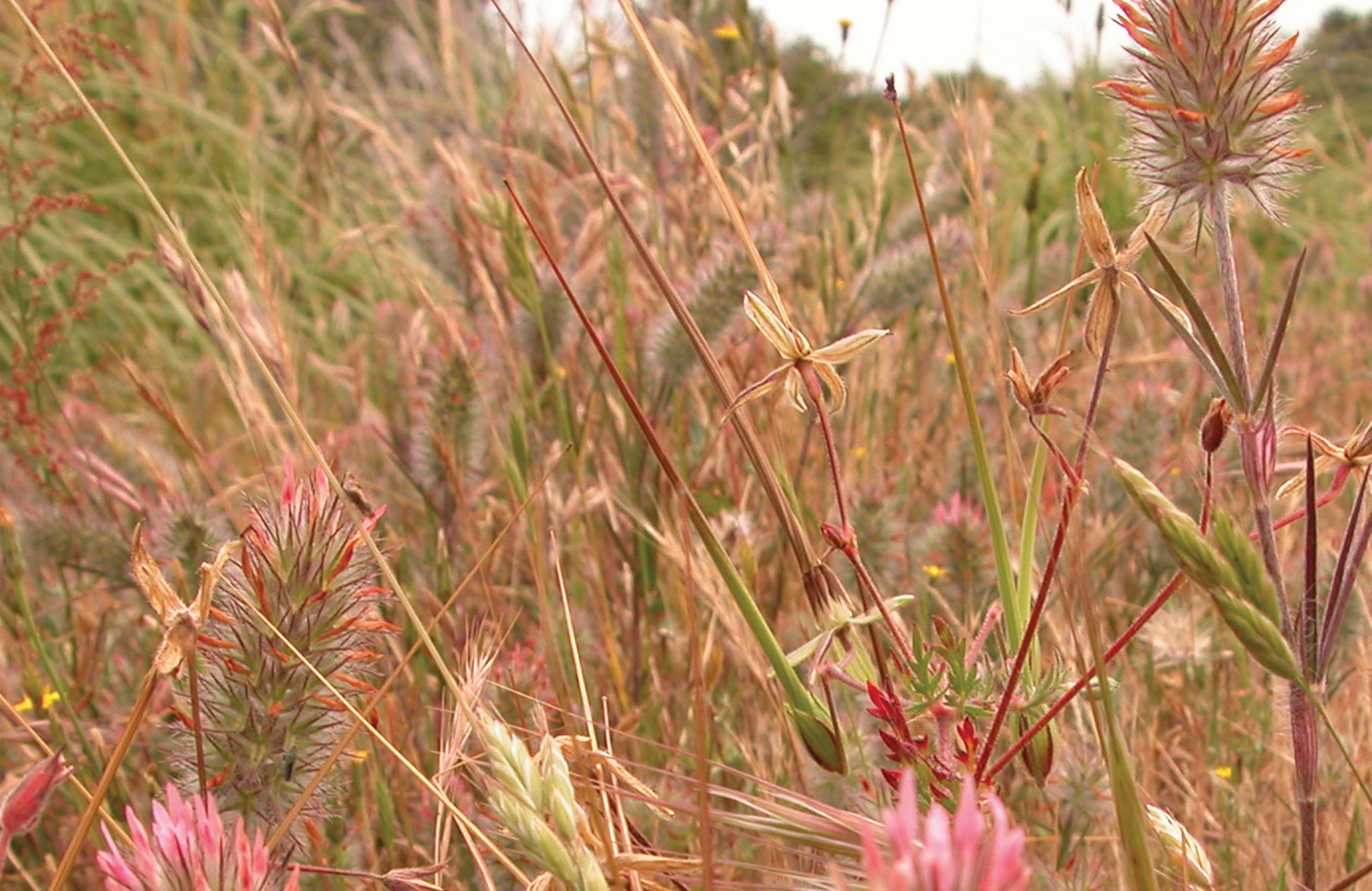
• Celebrating Three Decades of Accomplishments
• Managing the Land
• Supporting the Reserve
• Community in Focus
• Blohm Ranch - Then and Now